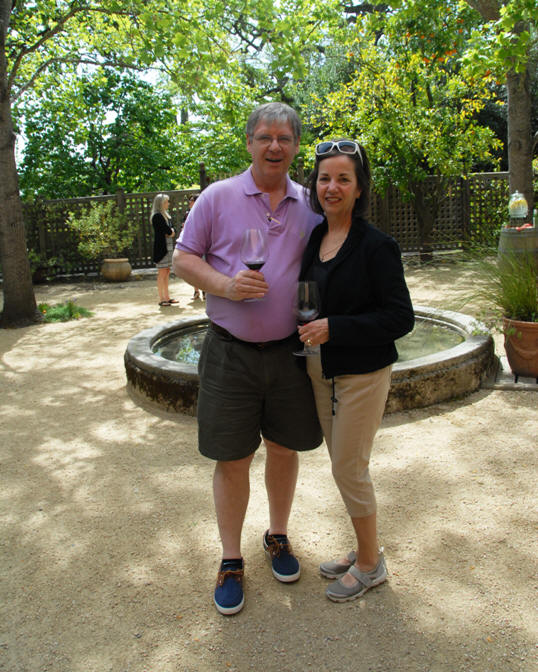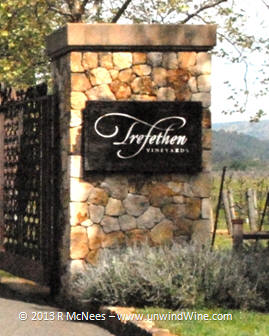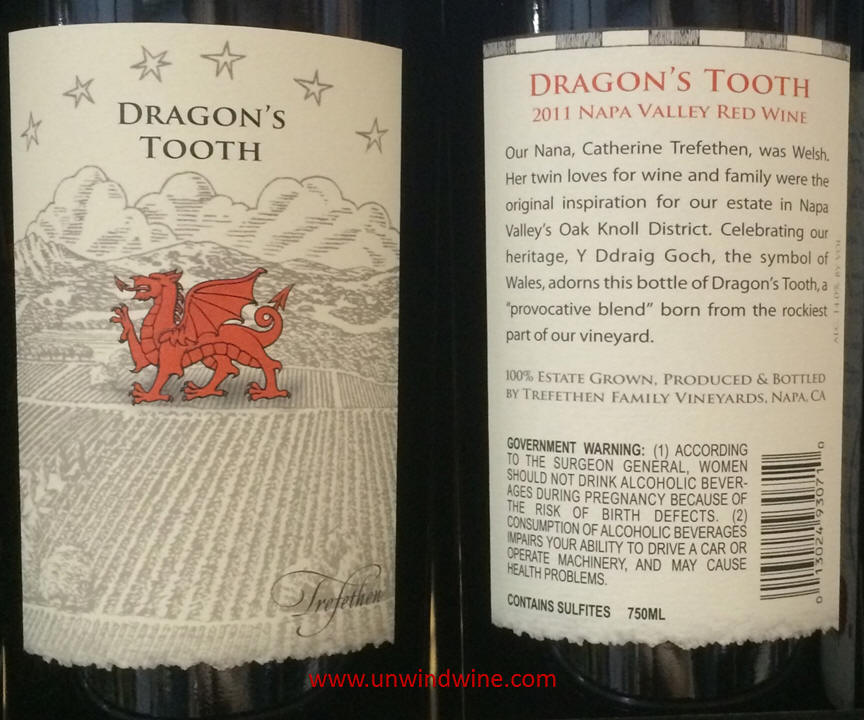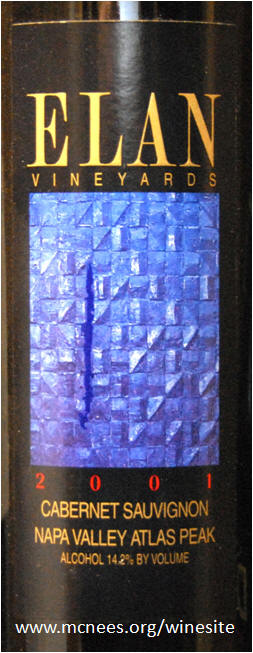Wine and Dine at Sepia Restaurant Chicago
We held a team / board dinner at
Sepia Restaurant Chicago, a short walk from our office, in the trendy west loop district.
Sepia offered an imaginative price fixe menu as their standard bill of faire for the evening. Sepia executive chef Andrew Zimmerman,
chef de cuisine Kyle Cottle, and pastry chef Lauren Terrill prepared a delicious, stylish, thoughtfully prepared and artfully presented four course meal.
Wine Director and Sommelier Alex Ring guided us through the extraordinary wine list offerings and selections.
They were also agile and adept at accommodating those of our group that had special dietary requests.
The first course selections were:
- foie gras tart rosé gelee, peach jam, aged balsamic, (shown)
- sweet corn velouté parisienne gnocchi, pickled blueberry
- kampachi crudo tikka masala consommé, baby tomato, almond
with a kaluga caviar option/supllement, and
- king crab chawanmushi, sauce nantua, hon shimeji mushroom
(at a supplement charge)
Second course:
- crispy soft boiled egg potato porridge, black truffle
(with black truffle supplement) - sablefish misoyaki charred cabbage, dill beurre blanc, grapefruit
- berkshire pork confit cherry mostarda, peanut, five spice (shown)
Third course
- hay grilled sirloin smoked spring onion, bone marrow chimichurri, braised beef empanada
- steelhead trout en croûte buttermilk, cucumber, dill
- duck breast plum, sunflower seed, fennel, chamomile (shown)
- ricotta agnolotti chanterelle, summer squash, aged ham butter, pine nut (vegetarian upon request), with black truffle option/supplement
The dessert course
- strawberry & almond olive oil cake, almond cream, strawberry milk crumble
- milk chocolate & banana whipped namelaka, green chartreuse ice cream, crunch
- yogurt & blueberry greek yogurt panna cotta, blueberry-spruce tip sorbet, sunflower seeds
Sepia have an interesting, extraordinarily imaginative winelist with many notable key
producers and labels as well as many offerings from lesser known boutique producers. The list is quite broad and extensive with a range
of price points for each category.
The price fixe menu also provided a
wine pairing flight available for $55 per person.
We were served by Sepia's Sommelier
and wine director Alex Ring who was extremely knowledgeable, personable and helpful in our selections and service.
The wine list starts with "Features and Notables - Wines to get excited about". The first section called a "Special Sort of Vertical", is a vertical collection of Krug Grand Champaign dating back to 1990 and featuring vintages 2004, 05, 06 and 07. Next was a collection from French Loire River Valley third generation vigneron Domaine Romain Guiberteau, and finally, a selection from Sicilian producer Andrea Franchetti of Passopisciaro featuring finest estate vineyard selections from Mount Etna appellation and the unique local varietal Nerello Mascalese.
There were close to forty WBTG (Wine By The Glass) offerings with a wide choice of offerings for each course - aperitif, Champagne/Sparkling, Sweet, White, Rose ('Orange), Red, Port, Madeira and a selection of liquors.
The Wine by the Bottle offerings spanned forty pages from the range of traditional varietals from an extraordinarily broad range of regions including lesser regions such as Bosnia, Lebanon, Morocco, Greece, England, Hungary and Mexico. In addition, there were the traditional expected 'Old World' regions of France, Italy, Germany, Austria, Spain and Portugal, as well as those from the 'New World'; US, Australia, New Zealand, Argentina, Chile, South Africa and Canada. They also offered a selection of Large Format magnums and a few double magnums.
One point about the broad wine list was lack of vintage specification which made it somewhat difficult from which to choose, or which might have explained or help justify some of the offering prices at the ends of the spectrum, such as example Chateau Pichon Lalande at $845 (1989 vintage) and Aubert Hudson Vineyard Chardonnay, Carneros at $420.
From their broad wine list selection, I was able to order a couple of intriguing/interesting yet budget conscious reds and whites. Note that my budget consideration is invariably influenced by the degree to which the diners are wine centric or focused, coupled with their sophistication or appreciation for fine wines. Also, the fact most in our group ordered alcoholic cocktails or drinks before hand diminishes their discernment for or focus on fine wines, and thus reduces the investment or price point in wine selections for the evening - both in terms of overall spend as well as discernment in and appreciation for the wines after consuming one or a couple drinks.
Taking into account that two of our senior partners, as well as me,
visited the Luberon in the Southern Rhone River valley a few years back,
I selection two Rhone River Valley wines, as well as two American
producer selections.
For the reds I ordered:
Matthiasson Cabernet Sauvignon, Oak Knoll District, Napa Valley
Domaine des Lises, Crozes-Hermitage, Rhône (Syrah)
For the whites I was excited to order and try and serve these two imaginative whites:
Maldonado Los Olivos Vineyard Napa Valley Chardonnay 2017
Mas de Daumas Gassac, Languedoc White Blend (Viognier, Petit Manseng, Chardonnay) 2016
Initially
I was leaning to the Lail Blueprint Sauvignon Blanc, Napa Valley, but
in the end went for 'bigger' more complex whites that would appeal more
to my more adventurous white wine drinkers.
Maldonado Los Olivos Vineyard Napa Valley Chardonnay 2017
This is from the Maldonado Family Vineyards, a small Mexican-American family owned
estate of 10 acres in Jamieson
Canyon in the northernmost tip of the Napa Valley. Owner - winemaker Hugo Maldonado comes from a vineyard management
background, who learned
the importance and craft of vineyard care working at Newton Vineyards, and working alongside his father Lupe Maldonado.
Lupe Maldonado arrived in America in 1968 and worked his way up from day
laborer to winery and vineyard owner, that he runs today with his son and grandkids.
Maldonado acquired the ten acre hillside property in 2007 in Jameson Canyon in the eastern hills
of Calistoga, looking out to the Palisades mountain range.
The winery, sited in a cave looking south toward the Palisades is where they do all production and barrel aging.
This small boutique producer produces nearly 6000 cases annually under the Maldonado Family Vineyards label, and produces a second label called Farm Worker.
Their flagship brand is classic “big Napa” Chardonnay, notably, this single vineyard designated label.
I woke up the next morning still tasting and thinking about this wine and went on-line to find and buy some. I called all our regular local wine merchants and was told it is discontinued, or out of distribution, meaning they no longer have a distributor here in Illinois, a highly regulated two tier distribution state. It is still promoted and sold on their website, but since I don't need a full case quantity, I'll continue to search out this label.
This was golden colored, full bodied with what I would call a combination of buttery and nutty flavor profile, concentrated but nicely balanced flavors of mineral, pear and citrus fruits, hints of peach and guava with notes of mineral and toasted oak accented by sprites of hazelnut and pain grille.
RM 92 points.
https://www.cellartracker.com/wine.asp?iWine=3663657
https://maldonadovineyards.com
Mas de Daumas Gassac, Languedoc White Blend (Viognier, Petit Manseng, Chardonnay) 2016
As I noted, the two Managing Partners in attendance visited the Languedoc and Provencal regions of Southern France two years ago. We also visited and toured the Southern Rhone, Chateauneuf-du-Pape and the Languedoc around that time. Hence, I selected this extraordinarily unique white blend from the Languedoc-Roussillon region in the South of
France, the area from the Mediterranean coast up to Provence. There a broad range of wine produced in this region, red, white and rose'. The region is traditionally known for more modest table wines, but in recent years it has been upgraded to more and more higher quality fine wines.
Mas de Daumas Gassac is located in the Hérault countryside and valley
carved out by the gentle flowing Gassac river. It is from the appellation of IGP
Saint Guilhem le désert cité d’Aniane, situated inland from the coastal
town of Montpelier, midway between the cities of Toulouse and
Marseille. The area has a unique
glacial terroir suited to produce exceptional fruit due to
underground sources of cold water and the influence of the surrounding
massifs of Arboussas and Larzac which contribute to the valley’s
micro-climate.
The estate dates back to 1970 when Aimé and Véronique Guibert acquired the property with an old Mas (farmhouse) and
an abandoned mill. Véronique, an ethnologist
from Ireland, and Aimé, a glover and tanner from Millau, set out to produce Grand Cru quality wines in an unremarkable, relatively obsure wine region.
The first vines were planted in 1972, un-cloned Cabernet Sauvignon sourced from top Bordeaux properties in the 1930s and 40s. The vines
were selected on the basis of quality and diversity, and not on their
yields or resistance to diseases.
Against all conventional wisdom and practice at the time, the Languedoc was known for the warm
climate loving Rhone grapes like Grenache, Syrah, Carignan, Cinsault,
and Mourvedre, Guibert planted Bordeaux varietals Cabernet Sauvignon,
Merlot and Cabernet Franc.
Guibert began
planting white grapes in 1976, although the first wine not released untial a decade
later. He was convinced the cooler climate of the Gassac valley could
produce whites with the freshness and acidity typically lacking in the
region’s whites. He planted Chardonnay
(cuttings from Comte Lafon), Viognier (cuttings from Georges Vernay) and Muscat.
Guibert and Véronique loved to travel, and wherever they went, they
brought back a few cuttings of other vines and planted them.
Between 1972 and 1978 they constructed a barrel cellar and a winery in former water storage
facility of the Gallo-Roman mill, the cold water of the Gassac river
providing a natural coolness that was perfect for the vat room and
ensured that the temperature remained constant.In 1978, the great oenologist Emile Peynaud, who supervised the rebirth of
Château Léoville-Las-Cases and acted as a consultant to Château Margaux,
Haut-Brion, La Mission Haut Brion, and La Lagune, visited Mas de Daumas Gassac. He monitored progress and advised on the first vinification.
Later, when journalists asked Professor Peynaud why he had helped and
advised an unknown property in the Languedoc, when he usually only
worked with world-renowned vineyards, he replied, “I have advised the
best properties in France, but there, for the first time, I had the good
fortune to be present at the birth of grand cru.”
The first vintage of Mas de Daumas Gassac Rouge (80% Cabernet Sauvignon) was released in 1978.
The 1982 vintage was recognized with the first media endorsement
of Mas de Daumas Gassac red wines, hailed by the magazine
Gault & Millau as ‘Languedoc’s Château Lafite’.
In 1986, the white Mas de
Daumas Gassac wine, a uniquely crafted wine showing huge aromatic complexity,
made its debut. This label was designed to showcase fruit
aromas, was a complex blend of Viognier, Chardonnay, Petit Manseng and
Chenin Blanc, and augented with around fifteen other grape varieties from Old
Europe.
The portfolio continued to expand with the release of
rosé Frizant in 1990 which completed the estate’s range of wines to three – a red, a white and a rosé.
In 1991, the Guilhem and
Figaro labels were released, completing the Moulin de Gassac
selection. Today, annual production totals 2.2 million bottles.
The business continued to prosper and expand but remains a family affair, with four of Véronique and Aimé Guibert’s five sons, Samuel, Gaël, Roman
and Basile involved, the siblings taking over management of the property in 2009.
This white wine is a unique blend of 25% Viognier, 25% Chardonnay, 25% Petit Manseng, 15% Chenin Blanc and
10% other grape varieties including Courbu from Bearn, Petite Arvine
from Valais, Rhole from Provence, Marsanne from the Rhone valley and 10
other rare grape varieties.Gold in colour, full bodied, complex but nicely balanced, bright expressive almond nut flavors accented with tropical fruits of peach and citrus with sprites of orange,
lemon, pineapple and apple with hints of floral, vanilla and stone fruit with a nice balance of acidity on a full finish.
RM 91 points. Decanter gave this 93 Points
https://www.cellartracker.com/wine.asp?iWine=2459925
https://www.daumas-gassac.com/
https://twitter.com/masdaumasgassac
Matthiasson Oak Knoll District, Napa Valley Cabernet Sauvignon 2016
Senior Managing Partner Tom R is celebrating his son's wedding in Napa Valley in the coming weeks. They'll be hosting and holding festivities at a couple of Oak Knoll District venues, serving Oak Knoll wines, hence I thought this would be a notable selection as a prelude to those celebrations.
Matthiasson Wines was started in 2003 by Steve and Jill Mathiasson, with a mission to produce wines
that are classical expressions of their grape varieties, that are refreshing, complement food, and are
moderate in alcohol.
Since launching their brand in 2003, the results of their non-traditional approach have been highly regarded by both customers and critics. Matthiasson has been named Winemaker of the Year by both the San Francisco Chronicle and Food and Wine Magazine, and the winery is a six-
time nominee for the prestigious James Beard Award.
The Matthiassons share duties in running the business with Steve responsible for winemaking and vineyard operations while Jill tends to the business. Beyond Matthiasson wines, Steve also provides vineyard consulting services to some other notable top wineries including Araujo Estates, Dalla Valle Vineyards, Spottswoode and Stag’s Leap Wine Cellars.
After studying philosophy in college, Steve landed a job in vineyards and orchards
working for a sustainable agriculture consulting firm in 1994. In 1999, he
co-authored the California manual on sustainable vineyard practices. By 2002 he was consulting on vineyard practices in Napa turning to his own family farming and winemaking in 2003.
Jill studied botany at Penn, then traditional methods for soil health
in grad school at UC Davis. She pioneered “farmer to farmer” networking
for sustainability in the early 90s until turning her attention to running the business operations of the family business.
Matthiasson produces this label in the tradition of
a Bordeaux Blend, with complexity, roundness and completeness, based on Cabernet Sauvignon as the dominant varietal with a small amount of Cabernet Franc (3%) and
Petit Verdot (2%).
This is blended from six different vineyard sources throughout Napa
Valley from three appellations (AVAs).
The winemaker writes that "the fruit sourced from Coombsville provides for structure and black fruit color and flavors,
Rutherford for savory Cabernet characters and bright fruit, and Oak
Knoll for soft fruit. It is a Napa Cab of the old school, a blended
wine, age-worthy, complex, and begging for a steak off of the grill". Winemaker Notes for this release: "The nose shows abundant red fruits, lots of bright cherry along with bramble-berries, such as blackberry, cranberry, mulberry, and framed with hints of mineral/herbal characters such as graphite, cedar, and pencil shavings. The palate is vibrant and fresh, with light tannin and beautiful acidity."
This was awarded 90 points by Wine & Spirits.
This was dark garnet colored medium bodied with soft elegant black-currant
fruits with notes of herbs, cedar, and
graphite with moderate tannins on the lingering smooth finish.
RM 90 points.
1995 cases produced.
The Matthiasson estate Vineyard
is adjacent to the winery and homessite. It sits on loamy alluvial soil on the west side of the Oak Knoll District,
just south of the Red Hen Vineyard. It is the coolest of the vineyards,
receiving morning fog and afternoon sea breezes most summer days.
The adjacent Red Hen Vineyard
next to Dry Creek, in the Oak Knoll District where it cool
breezes wafting up from the southern San Pablo Bay, and dry rocky alluvium soil combine to create structure and ripe fruits.
The Bengier Vineyard
(formerly Vare) is also on Dry Creek, in the Oak Knoll District, but on
gravelly soils in the mouth of the canyon. The cool air drainage and
short fall days as the sun is blocked by the redwoods result in light
aromatic wine.
The Helen’s Gate Vineyard
is the home of Arthur Berliner and Marian Lever. It sits on an
east-facing hill along Whitehall Lane in the Rutherford District of Napa
Valley. It was planted by Mathiesson and managed since in 2009.
The Dead Fred Vineyard
in Coombsville sits on rocky volcanic soil. It’s south-western exposure
causes it to pick up heat during the day, and the proximity to the
mouth of the Napa Valley keeps the nights cool. This vineyard has been leased by Mathiasson since 2012.
The York Vineyard is
in the heart of Rutherford, on the classic gravelly alluvium known to
create the famous “Rutherford Dust” character. This has been leased since 2013.
https://www.matthiasson.com/
Domaine des Lises, Crozes-Hermitage, Rhône (Syrah) 2016
We love big fruit filled Syrah wines, many of which are produced in the Crozes-Hermitage and other appellations in the Northern Rhone river valley.
Crozes-Hermitage is an appellation
of the northern Rhône valley in France. It covers a relatively large
area on the eastern bank of the river, to the north and south of the village of Tain
L'Hermitage. It is much larger than the prestigious Hermitage appellation which it surrounds, both in area and in terms of production volume.
The much smaller Hermitage appellation with 140 hectares
(345 acres) of vineyards is known for some of France's most enduringly
prestigious wines. These are on a par with those from the Côte Rôtie (30 miles/45km to the north), and Châteauneuf-du-Pape (70 miles/110km to the south). Both red and white Hermitage wines are long-lived and full-bodied.
The red wines are produced exclusively from Syrah and are often long lived and may be aged for 30 years or more. They are known for their robustness and rich aromas of leather, coffee and red berries.
Around 7.5 million liters of wine are produced and sold under the
Crozes-Hermitage title each year. This is more than the other seven
northern Rhône appellations combined. There are 1,768 hectares of vines
currently recorded for the appellation (4,368 acres).
There were two such wines on the winelist, this and one from producer Alain Graillot which we have had on many occasions. Hence, in the spirit of adventure and
experimentation, I opted to try a new producer and label and chose what I hoped would be a similarly situated
equivalent at relatively the same price point. In retrospect we
might have been better served off with the Alain Graillot Crozes-Hermitage, Rhône (Syrah) which we have featured in these pages. This alternative did not stand up to my exectations based on earlier
tasting experiences with the other label.
This is 100% Syrah, produced from 40+ year old vines in the lieu-dit “Les Picheres” area, less than 2km from the vines of Domaine Alain Graillot.
The wine pundit Vinous gave this a score of 92. I wonder if perhaps our bottle was slightly tainted, which I thought about at the time, but chose not to put up a challenge or make a scene, accepting that it may just be due to customary 'bottle variation' in the production blends.
This was ruby colored, medium full bodied with dark berry fruits accented by non-fruit notes smoke and leather and a slight funkiness from what might be hints of bacon fat, turning to notes of anise and black cherry liquor on the spicy finish.
RM 87 points.
https://www.cellartracker.com/wine.asp?iWine=2937760
 To top off the tasting flight, I brought Hall Vineyards Jack's Masterpiece Napa Valley Rutherford Cabernet Sauvignon, another 2013 for a horizontal comparison with the Padrone.
To top off the tasting flight, I brought Hall Vineyards Jack's Masterpiece Napa Valley Rutherford Cabernet Sauvignon, another 2013 for a horizontal comparison with the Padrone. 








































